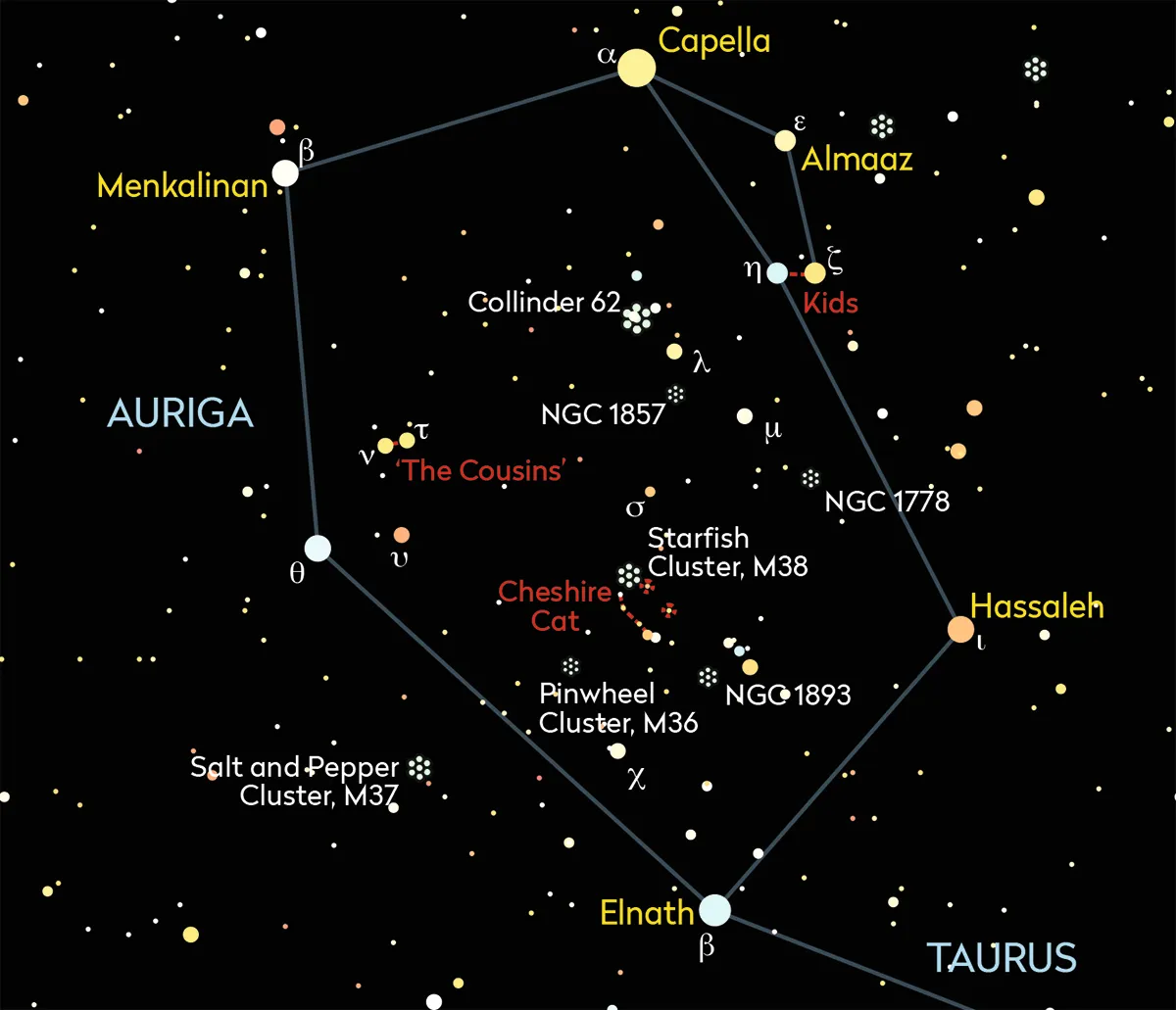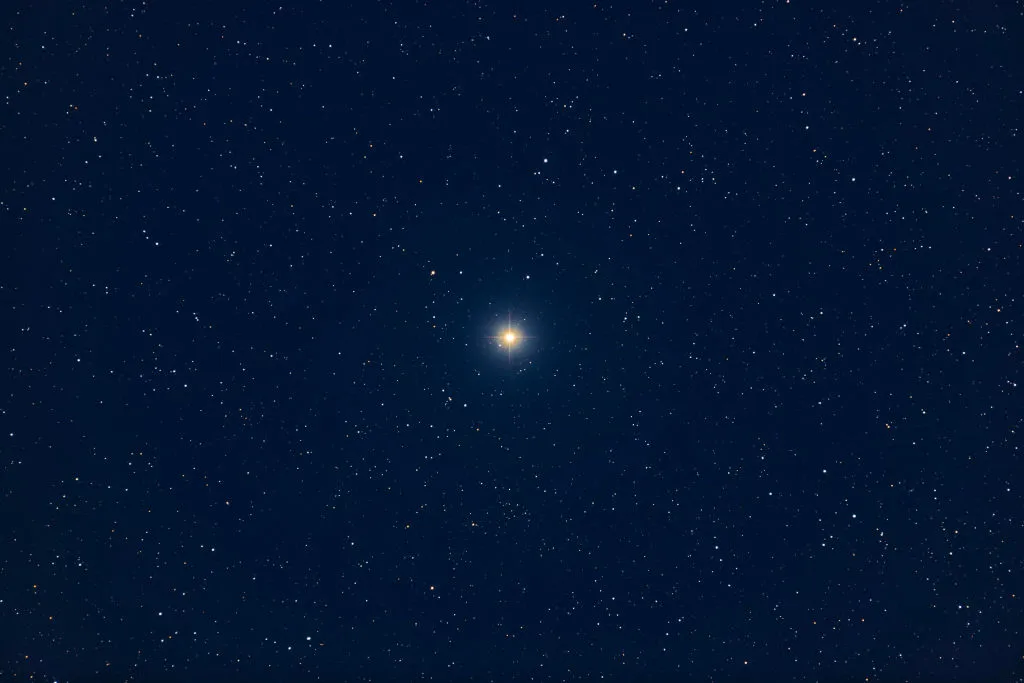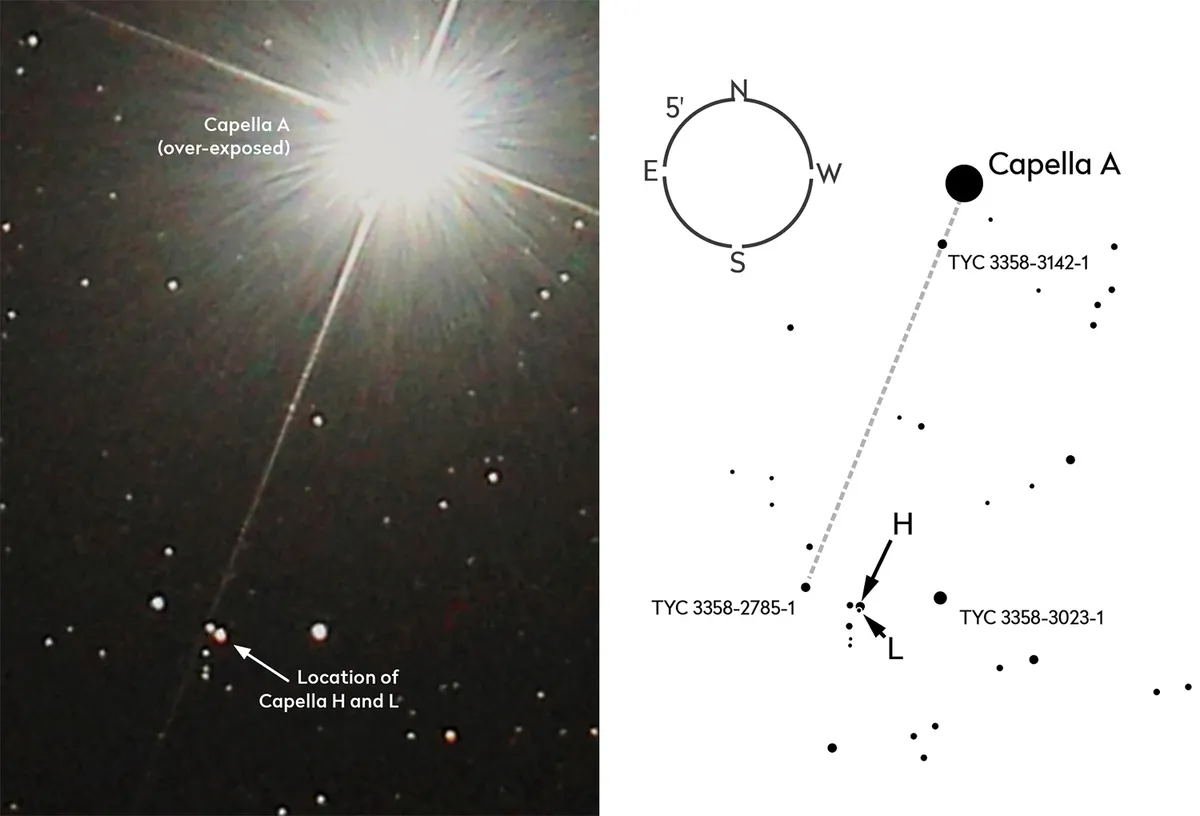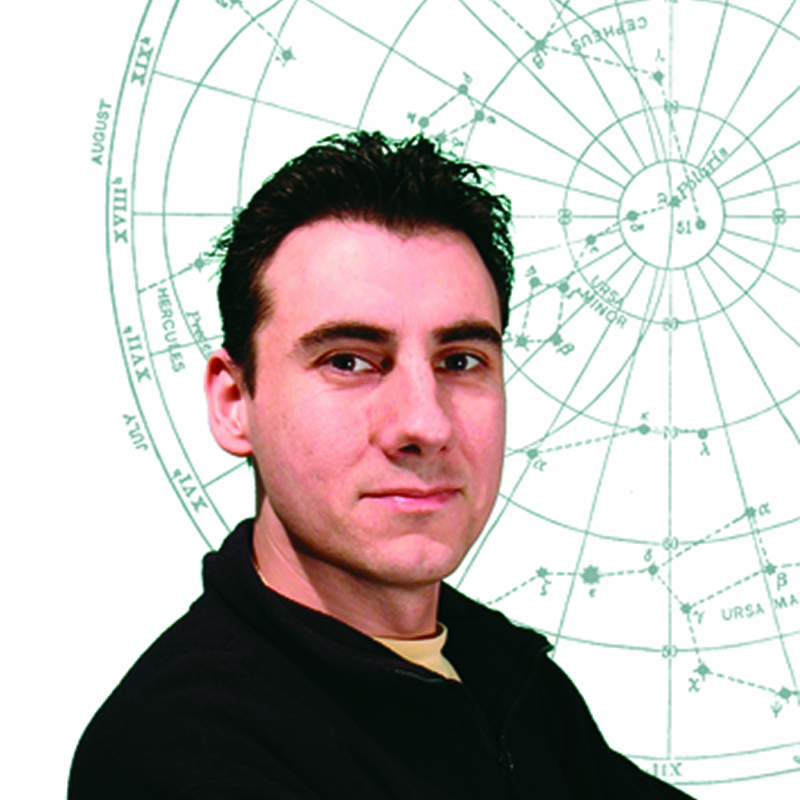The winter months are awash with brilliant stars that form the winter constellations, making it one of the best times of the year to observe some of the brightest stars in the sky.
One such star - or rather two such stars - is Capella. What you can see in the sky as a single point of light is actually a pair sitting very close together.
Their combined light makes Capella the sixth brightest star in the night sky, so it’s certainly difficult to miss.
Bright stars, too, tend to show their colour if they have any. Since it’s so powerful, Capella has a distinct yellow tinge that you can clearly see.
Compare it with some of the other bright stars in the sky and you’ll see how different it looks to those that are blue and red.
For more advice, discover our pick of the best winter constellations or Patrick Moore's best winter astronomy targets.

Capella (Alpha (α) Aurigae) rides high across the winter sky, a yellow beacon at the top of the misshapen pentagon that represents the main part of the constellation of Auriga, the Charioteer.
Look at Capella through a telescope and you’ll see numerous other stars nearby. These are listed in the Washington Double Star Catalogue as Capella A (the main star) through to Capella R.
Of these, only two are known to be true physical companions: Capella H and Capella L. The others appear close simply because they occupy the same line of sight as Capella A.
A good challenge is to locate Capella H and possibly Capella L.
Observing Capella with a telescope
The main star, Capella A, is a spectroscopic binary, Aa and Ab, two yellow giant suns in a 104-day mutual orbit around one another.
Their mean orbital distance is around 0.74 AU, which is approximately the distance between Venus and the Sun. At a distance of 42.8 lightyears, amateurs can’t see these stars separated, and they appear as one.
Capella H and L are different and are viable targets for amateur telescopes.

The stars are a binary pair of red dwarf stars gravitationally linked to Capella Aa and Ab, thus forming a quadruple system.
While Capella A is easy to find with any size of telescope, Capella H needs at least 150mm of aperture and Capella L a 250mm scope.
A large instrument over 300mm in aperture is recommended to separate the pair convincingly
Capella H and L appear very close to one another in the night sky, separated by just 3 arcseconds.
They sit 12 arcminutes southeast of Capella A, between two field stars, mag. 10.0 TYC 3358-2785-1 and mag. 8.7 TYC 3358-3023-1.

This makes Capella H easier to locate. Start with a low- to mid-power eyepiece giving you a field of view at least 30 arcminutes across. That’s roughly the apparent diameter of the Moon.
Centre on bright Capella A, then identify mag. +10.2 TYC 3358-3142-1, 1.7 arcminutes southeast of Capella A.
This is a key navigational star for two reasons. Its brightness is the same as mag. +10.2 Capella H and if you can see easy-to-find TYC 3358-3142-1, you should be able to see H.
Secondly, a line from Capella A through TYC 3358-3142-1 points to TYC 3358-2785-1, mentioned earlier.
Once you’ve located TYC 3358-2785-1 you should be able to identify brighter TYC 3358-3023-1 quite easily.
There are several faint stars between TYC 3358-2785-1 and TYC 3358-3023-1, Capella H being the brightest one, roughly mid-way between them.
Once identified, increase magnification to see whether you can see a southern ‘extension’ to Capella H.
If you can, you’ve located Capella H’s close binary companion, mag. +13.7 Capella L. Imaging the pair really helps reveal the distinct orange hue of this red dwarf binary.
This guide originally appeared in the November 2021 issue of BBC Sky at Night Magazine.

